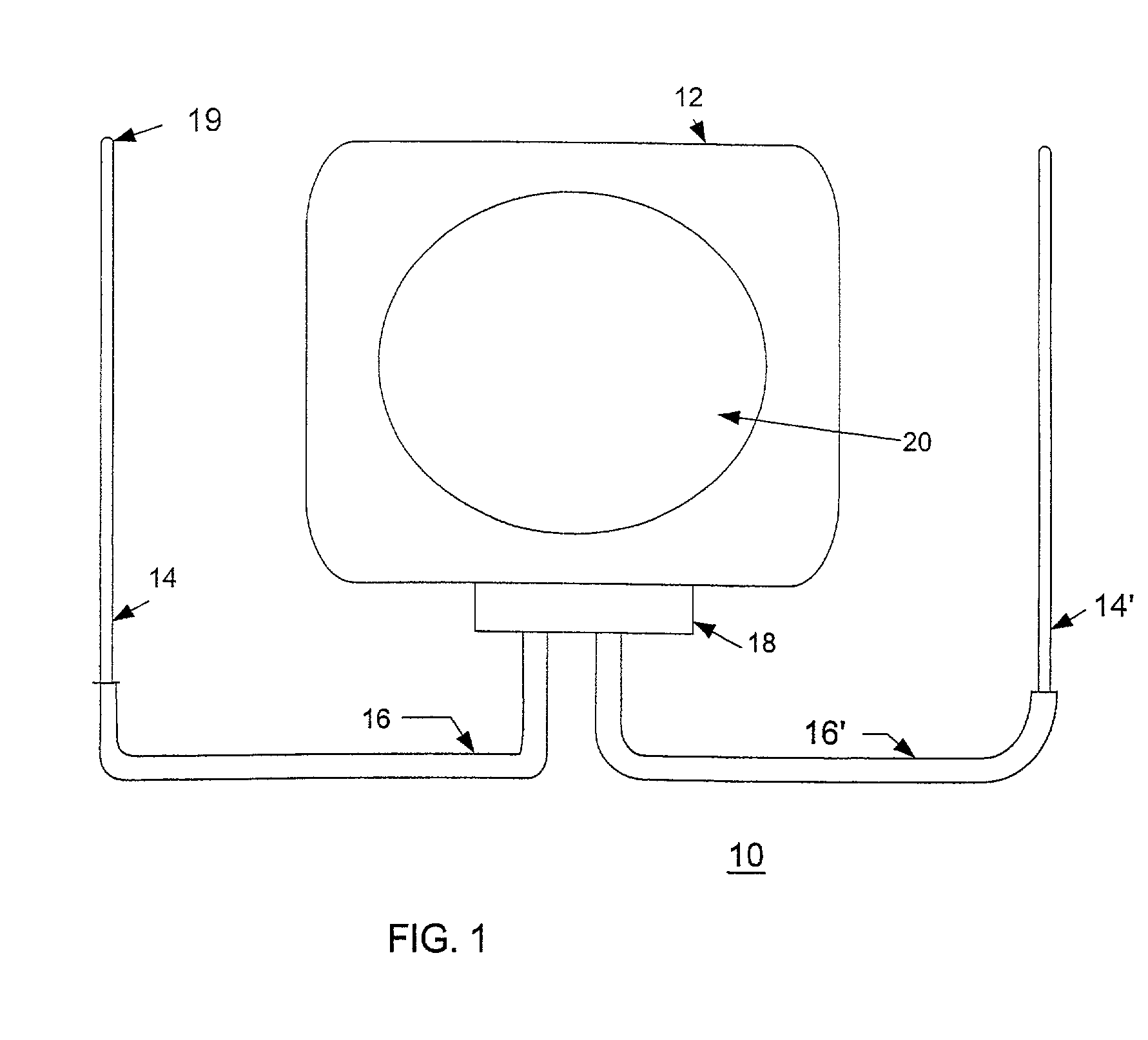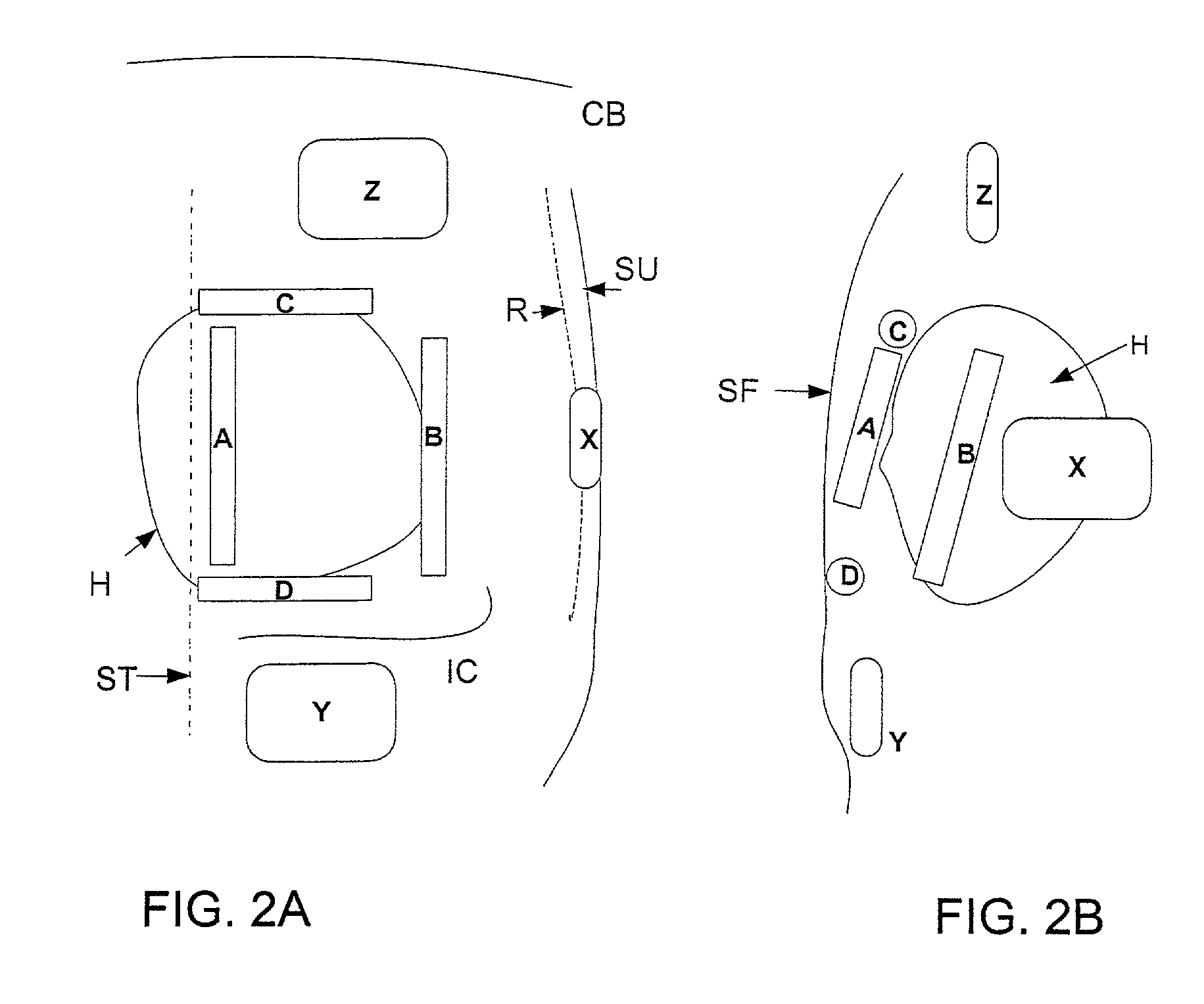Subcutaneous cardiac stimulator device having an anteriorly positioned electrode
a cardiac stimulator and electrode technology, applied in the direction of electrotherapy, heart defibrillators, therapy, etc., can solve the problems of abnormal performance of the av node, loss of blood flow to the rest of the body, stimuli generated by the heart's own natural pacemaker, etc., to achieve the effect of reducing the degree of surgical intervention
- Summary
- Abstract
- Description
- Claims
- Application Information
AI Technical Summary
Benefits of technology
Problems solved by technology
Method used
Image
Examples
Embodiment Construction
[0044]Referring now to the drawings, FIG. 1 shows an implantable cardiac device 10 constructed in accordance with one embodiment of the present invention. The device 10 includes a housing 12 containing a pulse generator (not shown), an electrode 14 and a lead 16. The electrode 14 is connected to the pulse generator through a header 18 disposed on the housing 12.
[0045]In particular embodiments of the present invention, the housing 12 can act as an active housing. In this embodiment, the housing 12 itself, comprises a second electrode for the ICD device 10. An active canister housing 12 is formed either with a continuously conductive surface, or with a separate conductive zone 20. The conductive surface or zone 20 of an active canister housing 12 is connected electrically to the circuitry disposed in the housing 12. If the whole housing 12 is used as an active electrode, then its surface area presents a low interface resistance with the patient's tissues, thereby lowering the losses i...
PUM
 Login to View More
Login to View More Abstract
Description
Claims
Application Information
 Login to View More
Login to View More - R&D
- Intellectual Property
- Life Sciences
- Materials
- Tech Scout
- Unparalleled Data Quality
- Higher Quality Content
- 60% Fewer Hallucinations
Browse by: Latest US Patents, China's latest patents, Technical Efficacy Thesaurus, Application Domain, Technology Topic, Popular Technical Reports.
© 2025 PatSnap. All rights reserved.Legal|Privacy policy|Modern Slavery Act Transparency Statement|Sitemap|About US| Contact US: help@patsnap.com



